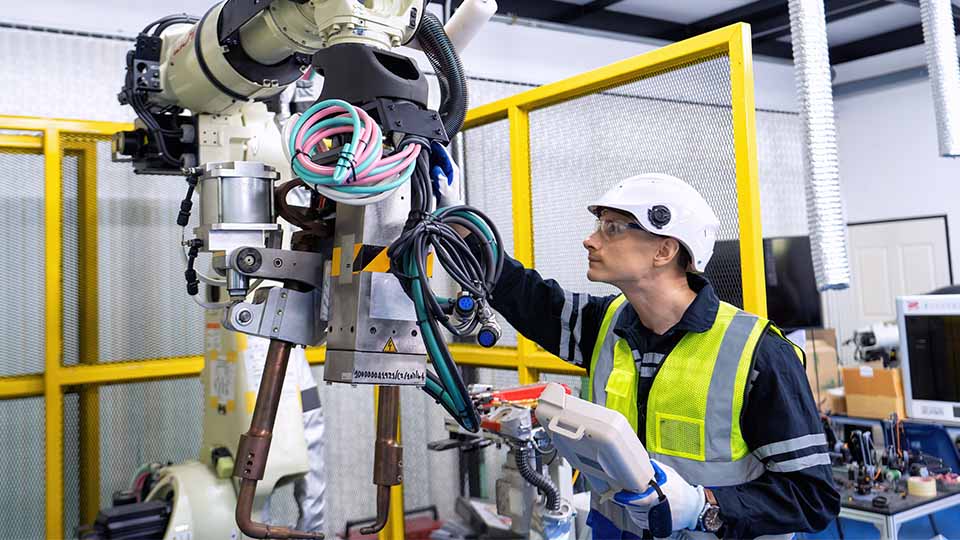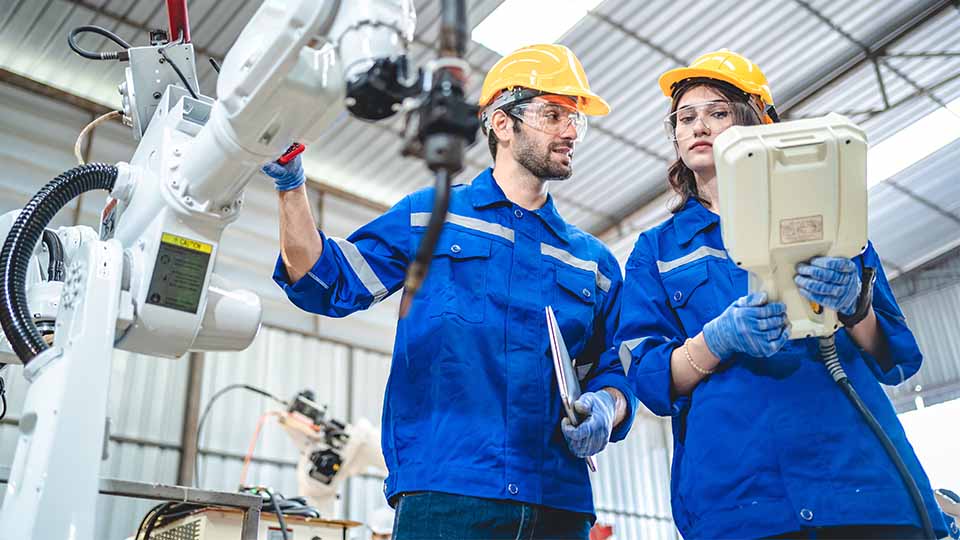Industrial automation can give you a competitive advantage in the local, regional, and global markets. A robotic system can make your manufacturing process faster, easier, and more consistent.
In turn, your products can turn out higher in quality, which is another great way to increase your bottom line.
However, there is one roadblock that many companies face: automated systems are very expensive. They are a huge investment, but they can also lead to better cost savings over time.
So how can you make sure your automation investment is paying off? Let’s find out how you can calculate your return on investment (ROI) for industrial automation.
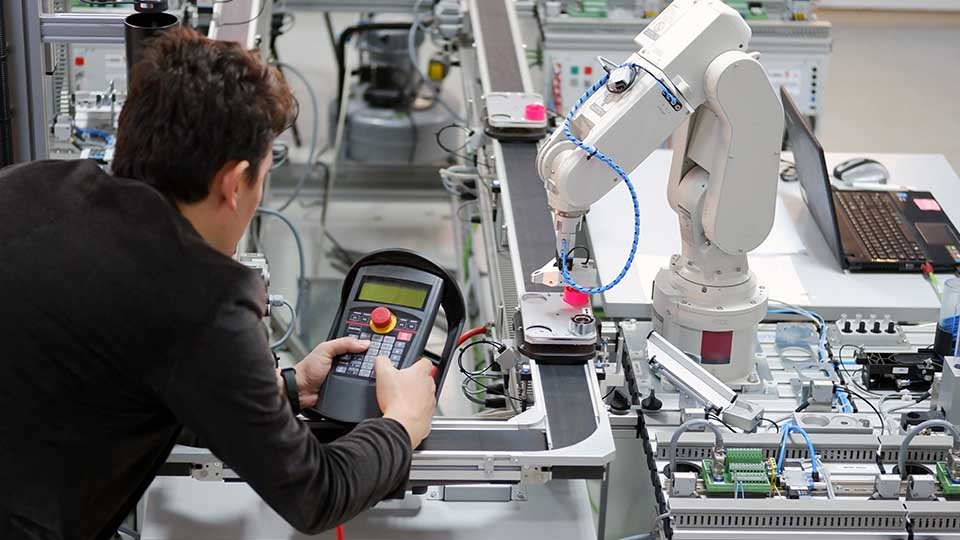
How to calculate ROI on your automation project?
An industrial automation system is not cheap. Naturally, you want to make sure that the investment is generating (or will generate) significant revenue for your company. To do that, you calculate your ROI.
Below, I will break it down into a few straightforward steps:
1. List All the Costs:
Start by jotting down every penny you need to put into the automation system. Expenses for factory automation projects typically include:
- Upfront Costs: This is typically the bulk of your expenses. Make sure to include the cost of any hardware and software required for your project.
- Installation Costs: This can involve anything from construction modifications needed to accommodate new machinery to software integration into your existing systems. Costs here also include labor costs for specialists for a successful setup, which usually do not come cheap.
- Training Costs: Your machinery or software will only be as good as the people operating it. Investing in comprehensive training for your staff makes sure they’re equipped to handle the new technology. It is an ongoing process, too, as initial training might be followed by periodic refreshers to help staff keep up with updates and changes.
- Maintenance Expenses: Like any technology, your new robotic automation system will require a regular maintenance program to keep it in top shape. These costs include regular servicing, software updates, and potentially replacing parts that wear out.
2. Quantify Expected Gains:
Next, let’s quantify all the ways this project will save or make you money.
- Increased Production: An automated system can operate at a consistent pace without breaks, fatigue, or downtimes associated with human labor. Increased capacity could help you meet higher demand more quickly, enter new markets, or even just keep up with competitors.
- Labor Savings: A factory automation project that takes over routine tasks can reduce the need for human labor. This doesn’t necessarily mean cutting jobs but reallocating human resources to more valuable tasks that require human oversight. In terms of direct savings, calculate the difference in wages before and after automation for the tasks automated.
- Improved Quality: Automation systems improve product consistency, which cuts rework and refund costs. They also increase brand reputation, which can potentially improve customer satisfaction, prices, and market share. Measure this benefit by tracking reductions in waste and defects post-implementation.
- Energy Efficiency: Robotic industrial equipment often operates more efficiently than manual operations, which can lead to significant savings in energy costs. For example, modern machines designed for efficiency consume less power and can automatically power down during idle periods.
3. Calculate Your ROI:
Now that you have your expected cost savings and expenses, you can now perform the ROI calculation with this simple formula:
ROI = ((Total Benefits – Total Costs) + Total Costs) x 100
This formula will give you the ROI percentage. A positive number means you’re seeing more money back than you spent, which is exactly what you want.
If numbers are in the red, you might need to see where things are going wrong. Are there unexpected costs? Are the benefits not as high as you hoped? You might need to find more ways to make your robotic system more cost-effective or reduce other expenses.
Calculating ROI Example:
Let’s simplify this robotic process automation with a real-life example. A manufacturing company decides to automate its packaging line to increase efficiency and reduce labor costs.
The expected outcomes are faster packaging times and fewer employees needed for manual packaging tasks.
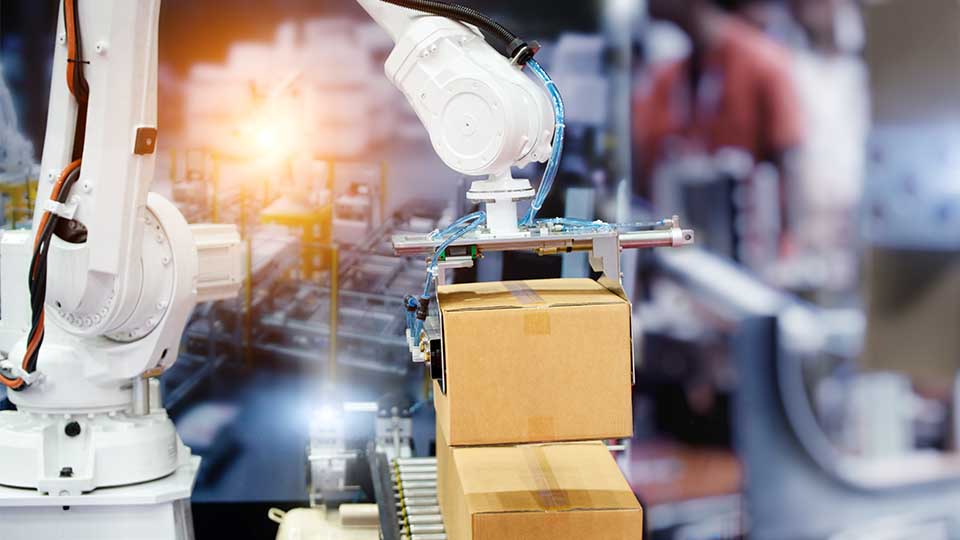
Initial Costs:
- Initial Investment in Automation Equipment: $150,000
- Installation Costs: $20,000
- Training Costs for Employees: $5,000
- Annual Maintenance: $10,000
Total Initial Investment: $175,000 (Equipment + Installation + Training)
Annual Maintenance Costs: $10,000
Benefits:
- Increased Production: The automated packaging line can operate 24/7, increasing output by 30%.
- Reduced Labor Costs: The automation solution reduces the need for manual labor by 3 full-time employees, saving $45,000 annually in labor costs.
Calculations:
#1 Calculate Total Benefits for Year 1:
- Increased Output Value: Assume the extra 30% output translates to an additional $60,000 in revenue.
- Labor Cost Savings: $45,000
- Total Benefits for Year 1: $105,000
#2 Calculate Annual Net Benefits Starting Year 2 (factoring in maintenance costs):
- Annual Benefits (Increased Output + Labor Savings): $105,000
- Less Annual Maintenance Costs: $10,000
- Annual Net Benefits from Year 2: $95,000
#3 ROI Calculation:
- Net Benefits in Year 1: $105,000 – $175,000 (initial investment) = -$70,000
- ROI for Year 1: [($105,000 – $175,000) / $175,000] * 100 = -40%
- ROI from Year 2 Onwards: [(Annual Net Benefits – Initial Investment) / Initial Investment] * 100
- ROI for Year 2: [($95,000 – $10,000 (previous year’s net negative balance)) / $175,000] * 100 = 48.57%
Although, in the example case study above, the ROI in the first year is negative due to the substantial initial investment, the automation begins to show a positive ROI by the second year as the ongoing benefits start to outweigh the total cost.
This example demonstrates the typical pattern where initial robotic automation investments may take time to pay off but can yield significant long-term benefits.
Other key factors to consider when calculating ROI:
Below, I list a handful of other key factors that may play a role in the ROI calculation in industrial automation projects.
Equipment: Purchasing new or used equipment can play a major role in the capital cost of equipment. Buying refurbished industrial robots can have a lot of benefits for companies that need to be cost-conscious about their automation purchases. Many used robot suppliers will provide warranty support, spare parts, and upgrades, offering more flexibility for production support.
With regular preventative maintenance scheduled, the automation equipment can last a decade or longer. This equipment could also be repurposed for new processes and even moved to other inter-company facilities. When investing capital into industrial automation equipment, it is a good reminder that this equipment can always be repurposed and scaled up (or down) to optimize production to its full potential.
Service Support: Mechanical failures can and will happen with industrial automation equipment. How do companies protect themselves from these mechanical breakdowns?
JOINER Services provides skilled engineers and technicians who can support with automation consulting services. Their contractors can provide emergency, integration, or production support for industrial automation equipment. They can send out their skilled trade workers (PLC and robot programmers) or their contract engineers (controls, electrical, robotic, automation, or electrical engineers) to any facility.
Workplace Injuries: Workplace injuries can bring added costs to a company because they may have to pay medical expenses and wages for an employee who isn’t working while dealing with the lost production time and potential lawsuits. Companies need to remember their factory automation solutions will offer an excellent way to mitigate injury risk with the vigorous safety programs focused around industrial automation equipment.
Even in workplaces where robust safety programs around automation equipment are the industry standard, bad workplace ergonomics can take their toll on employees. Industrial automation can reduce human exposure to workplace hazards, like high temperatures, lifting heavy objects, or reducing repetitive movements.
Automation solutions are designed with the highest safety factors in mind, which means reducing risks and minimizing the potential risks introduced with any new equipment onto the manufacturing floor. Ultimately, companies should factor in the potential for workplace injuries into their ROI calculation with any new automation equipment.
Economic Downturns: The COVID-19 pandemic taught us many new things, especially in the manufacturing space. We must be prepared and adapt for an abrupt economic downturn or drastic change in our manufacturing policies. Companies must now have backup plans for a rapidly reduced workforce and learn how to produce with limited resources.
From pandemics to shortages to international wars, in order for companies to survive in today’s global market, they must be able to adjust rapidly, or they will go out of business.
So, how can companies ensure they have support during these economic downturns? Knowing when it is the right time to hire industrial automation support for your project is critical. JOINER Services can help companies with their contract engineering or technician needs in the industrial automation space. Contact them today to see how they can help!
Floor Space: Shop floor space is an extremely valuable commodity, and companies need to make sure that their factory automation projects are using all available space to their advantage. This includes making the ergonomics easy for employees to use and using the space above machines to increase the workspace square footage.
A company should think of all possibilities to use lean and agile manufacturing techniques that focus on flexibility and responsiveness. Not properly using floor space can cause bottlenecks in production assembly and also can delay support calls if team members can not quickly and safely get to down automation machines.
Keep your automated equipment cost-effective with JOINER Services.
As I mentioned above, maintaining industrial robots can be costly. However, you should not skimp on this unless you want poorly maintained equipment to disrupt your manufacturing processes.
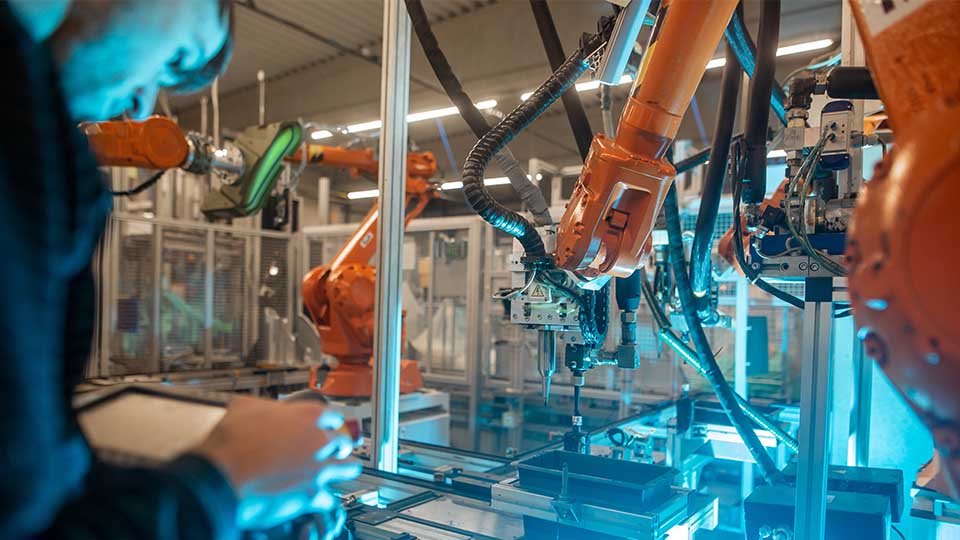
If you want to hire a top-notch automation engineer but don’t have the resources for a full-time position, JOINER Services might just be what you need.
JOINER Services is a platform that lets you connect with self-employed engineers all over the US. We have professionals in almost every field, from robot programming services and controls engineering services, to help support your industrial automation project.

Join for free and start viewing vetted profiles today!
FAQs on Industrial Automation ROI:
Below, I list some common FAQs on industrial automation ROI.



